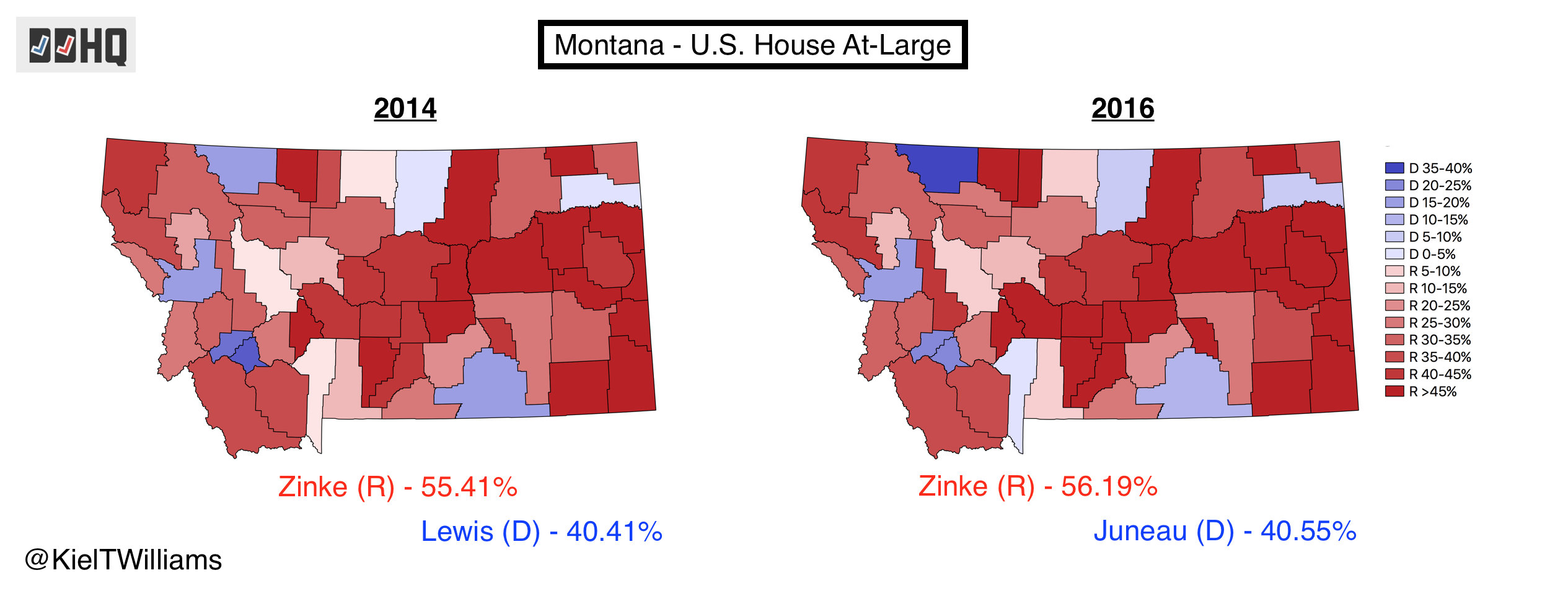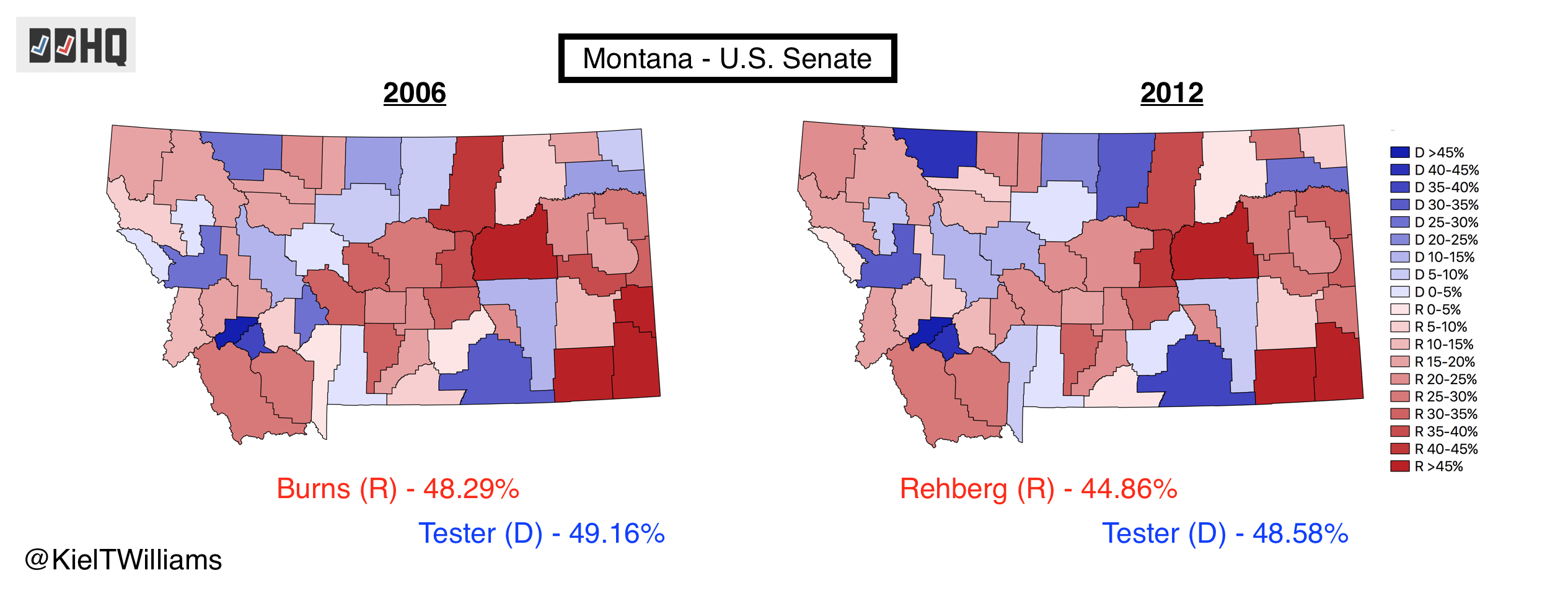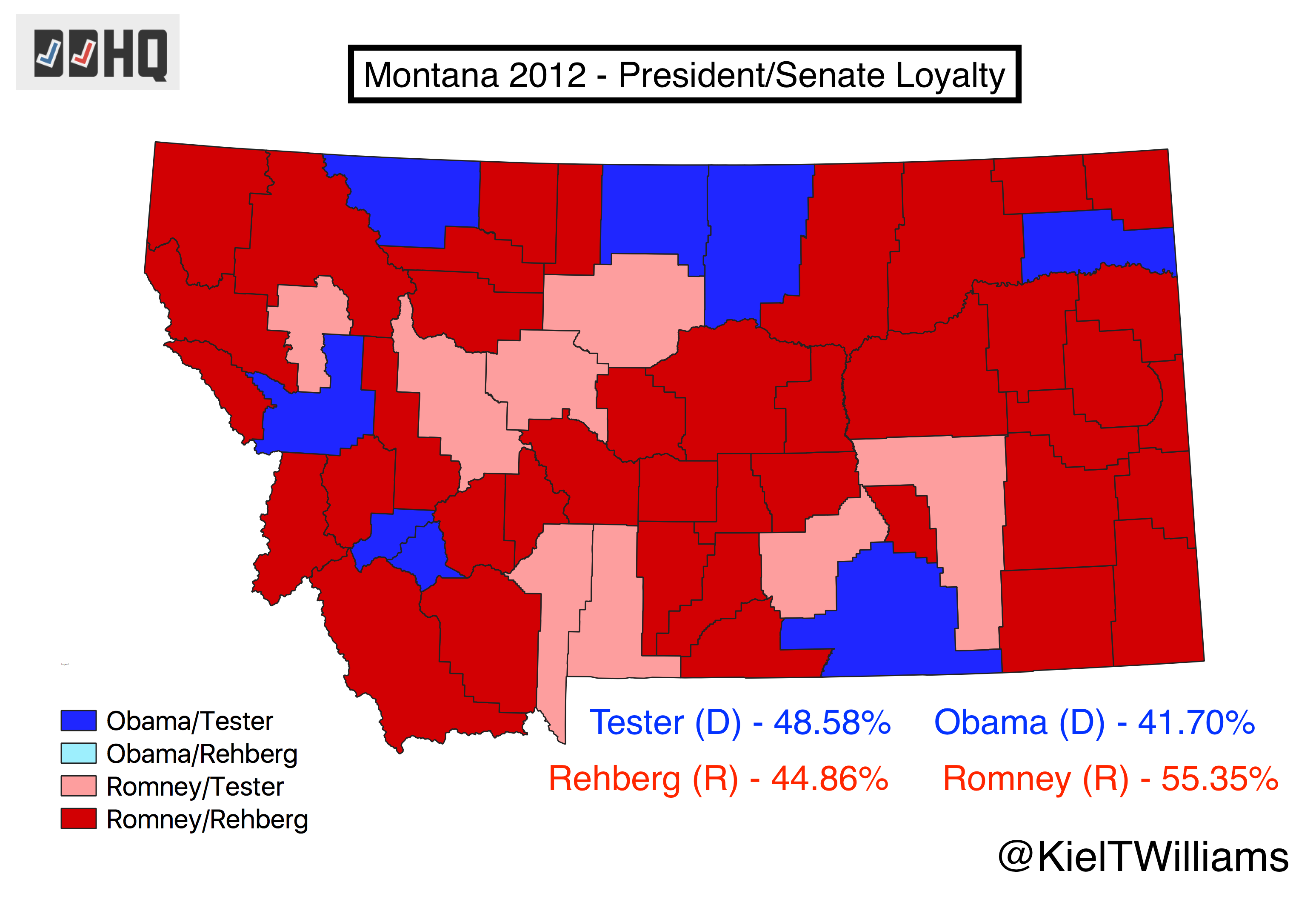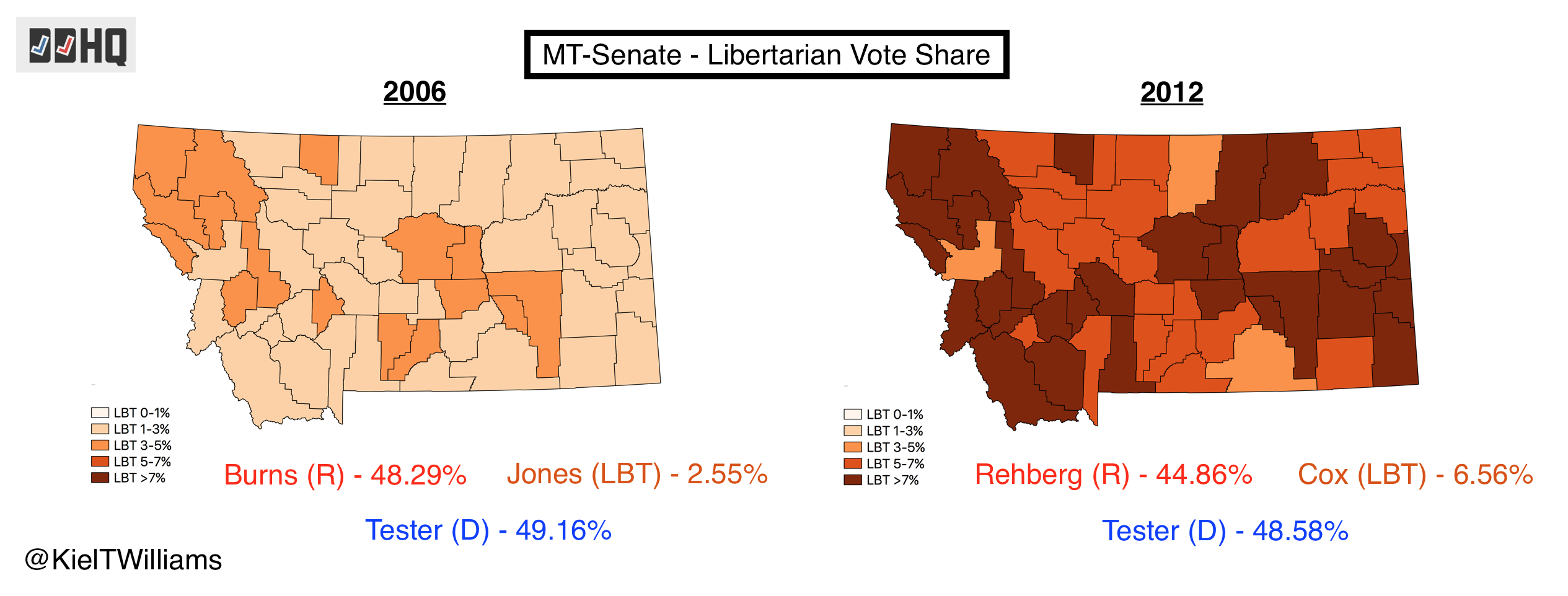Montana is another key state deciding control of the Senate in this year’s midterm election. Senator Jon Tester (D) is pursuing his third-term against Montana state auditor Matt Rosendale (R). Despite his deep-red state’s R+11 lean, Tester is a proven commodity. After narrowly unseating incumbent Sen. Conrad Burns (R) in the 2006 Democratic wave, Tester managed an even more impressive 4-point victory against former U.S. House Rep. Denny Rehberg in 2012. Tester’s 2012 win came even as Mitt Romney carried the state by nearly 14 points against Barack Obama.

Now-Secretary of the Interior Ryan Zinke’s (R) easy U.S. House victories in 2014 and 2016 provide a useful baseline for Montana. The core sources of Democratic strength in the state are Missoula and Butte (to the west), Billings (to the southeast), and Native American reservations (to the north). As Zinke’s wins illustrate, these are not enough to win an election – or even get very close – in this heavily rural state. Now-incumbent Rep. Greg Gianforte faces a competitive reelection this year against Montana State Representative Kathleen Williams.

Tester’s path to victory didn’t change much from 2006 to 2012. In addition to his large margins of victory in the aforementioned cities, Tester also outran other Democrats in the region around Great Falls (east of Missoula) and in the area north of Billings, to the southwest. Tester also did noticeably better near Bozeman, in the south-central part of the state.

We see this more clearly by comparing Tester and Obama’s 2012 performances. While both candidates won in Missoula, Butte, and Billings, only Tester was able to carry Bozeman and Great Falls. As his narrow margins demonstrate, victories in these tougher areas are crucial for statewide Democratic candidates in Montana.

One other notable detail about Tester’s victories: his failure to clear 50% of the vote in either 2006 or 2012. In each case, this came as the result of a small-but-significant Libertarian candidate. In both years, Tester’s margin of victory was much smaller than the Libertarian vote share. The effect was especially clear in 2012, when Libertarian Dan Cox obtained over 6% of the vote, and broke 10% in a number of counties. This year, Tester and Rosendale share their ballot with Libertarian Rick Breckenridge.
As befits an incumbent running in a year when the other party controls the White House, Tester is seen as having an edge against Rosendale. Tester has maintained a small-but-consistent polling lead, and he has crushed Rosendale in fund-raising. The Øptimus legislative model currently gives Tester a 74% chance of reelection.